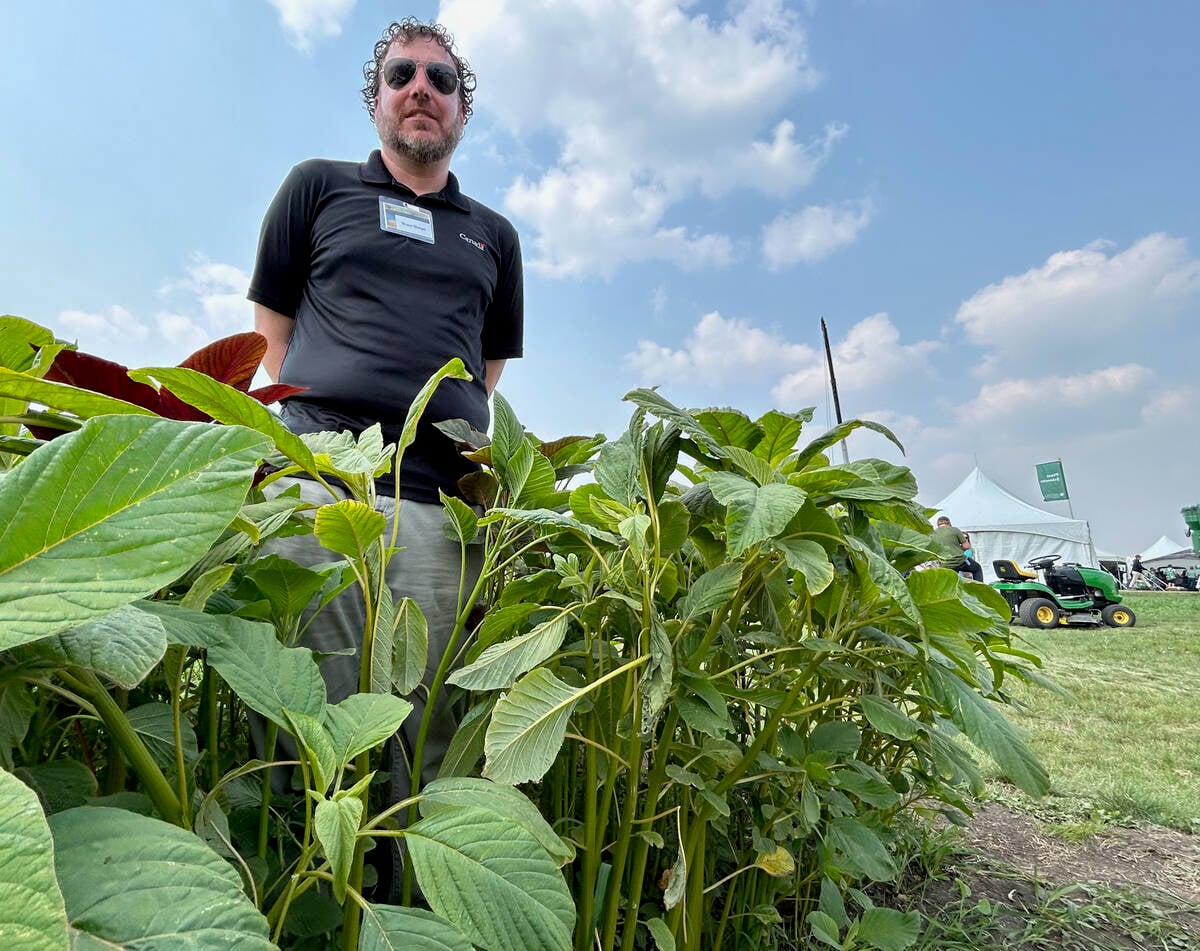Glacier FarmMedia — At 2 p.m. on July 17, Ryan Bonnett and many other people at the Ag In Motion farm show near Langham were seeking a place in the shade. The temperature was around 30 C and the word “hot” came up in most conversations at the show.
The afternoon temperature was also on the minds of growers across Saskatchewan and Alberta, worried about heat blast in their canola crops.
In mid-July, some of those farmers were texting or calling their ag sales reps to ask about products that can minimize the damage from heat stress.
Read Also

Glufosinate-resistant waterhemp appears in U.S. Midwest
News of glufosinate-resistant kochia in the U.S. is concerning as farmers are losing options to control waterhemp, also of the pigweed family.
“At this time of year, we get a massive amount of e-mails on the website, and phones (of sales reps) are blowing up the last few days,” said Bonnett, the Canadian commercial lead for biologicals at Corteva AgriScience.
“We get (phone calls and texts) the day before it gets hot.”
Many of those farmers want information about X-Cyte, a growth hormone product from Stoller, a company Corteva bought last year.
“When temperatures rise in your crop, the growth hormone cytokinin begins to degrade within your plants, often resulting in flower abortion and pod loss,” says the Stoller website.
“X-Cyte is a foliar application of cytokinin designed to restore the hormone balance within your crop and safeguard your yield during the hot summer months.”
Something that reduces heat blast and preserves canola yield sounds great, but farmers lack information on when to apply the product.
At AIM, a canola grower asked Bonnett about X-Cyte and wanted to apply it the next day.
The interest from farmers is great, but the middle of a heat wave is the wrong time to apply the foliar product, Bonnett said.
“We need to get it on before (the hot weather).”
Bonnett’s story represents a larger challenge within Canada’s crop sector. Dozens of new products, such as biostimulants and plant growth promotants, are now available to growers. However, most farmers don’t know when, or how, to use them.
“The biggest knowledge gap is, ‘Where do I put these, when are they going to work well?’” Bonnett says.
“Transparently, I don’t think we have enough people out there to educate guys…. Here’s a tool that you use for this particular problem… (but) you’ve got to know when to use it.”
Not the same
Another issue is definitions and how the products are described.
Most growers are familiar with plant growth regulators, but biostimulants are not the same.
“Plant growth regulators are defined as synthetic compounds … that mimic naturally occurring plant hormones,” says a 2023 paper in Frontiers of Plant Science.
“Biostimulants usually are complex mixtures containing organic (example, extracts of seaweed) …. microbial (fungi and bacteria)…. They enhance plant growth and health by stimulating natural processes at a minute quantity.”
Grower education remains a challenge, but sales data indicates that farmers are curious. They are experimenting and want to know if these products will work on their farm.
“In a year like this year, we have excess moisture in some areas and a lack of moisture in (other) areas…. The one thing that really matters is root growth,” said Jesse Hamonic, vice-president and country head for Nutrien Ag Solutions.
Speaking also from the shade at AIM, Hamonic said his company is seeing strong sales of Radiate.
“It’s a growth stimulant for the roots. It’s been around for several years now,” he says.
“This year, we’re going to set a record on Radiate.”
Corteva is also enjoying a period of strong growth for biostimulants and other products that preserve plant health.
“Year over year … it’s in the double digits,” Bonnett says.
“Guys are interested in trying it. Once they figure out the value proposition and what problem they’re trying to solve, I think it will grow even more.”
Corteva and Nutrien Ag Solutions were just two of the firms at Ag In Motion promoting plant health stimulants to Canadian farmers.
The market is busy and may soon get busier, because companies expect to launch more products.
From Corteva’s standpoint, Bonnett says several are in the pipeline with prospects for commercialization in the years to come, “all attacking a different problem we have out here (in Canada).”
















